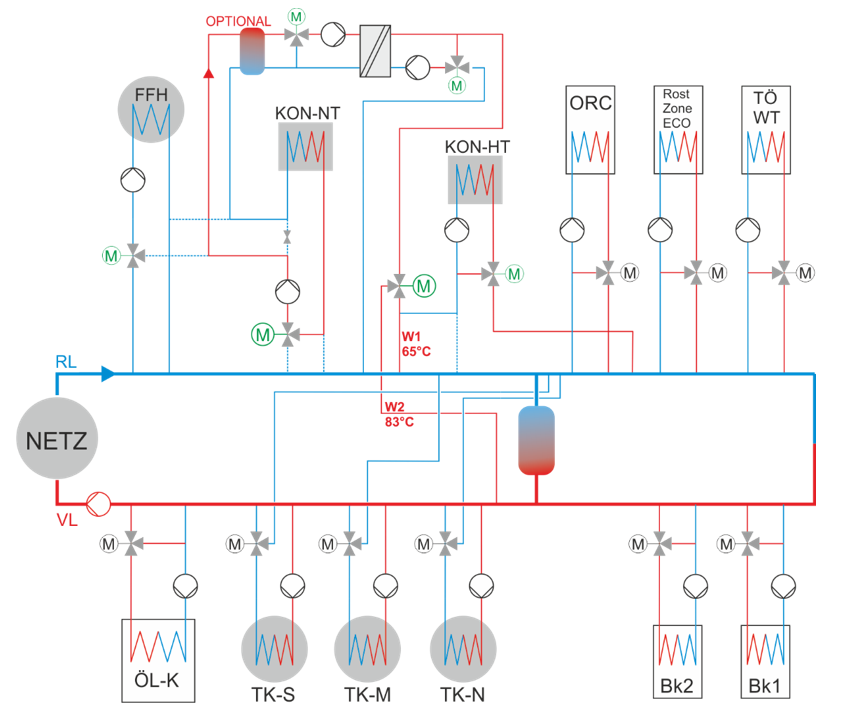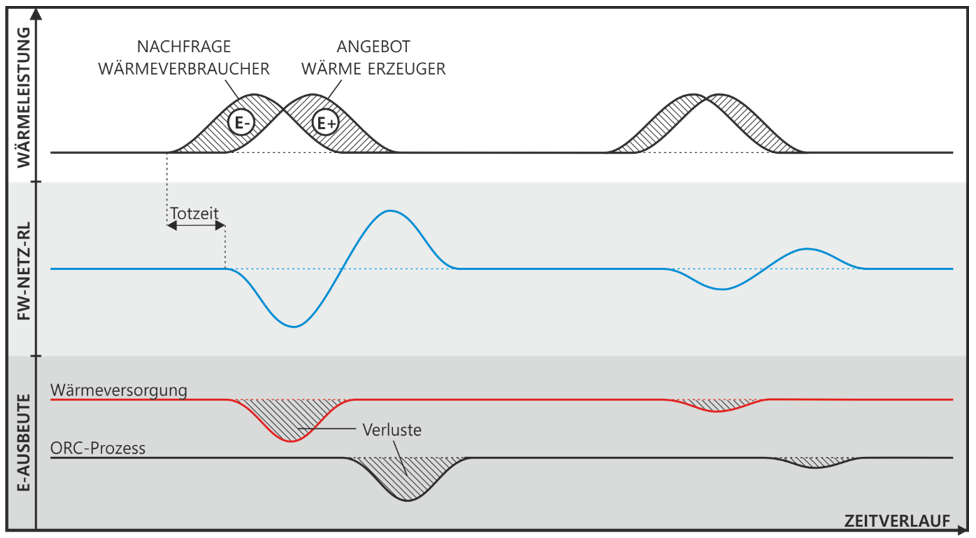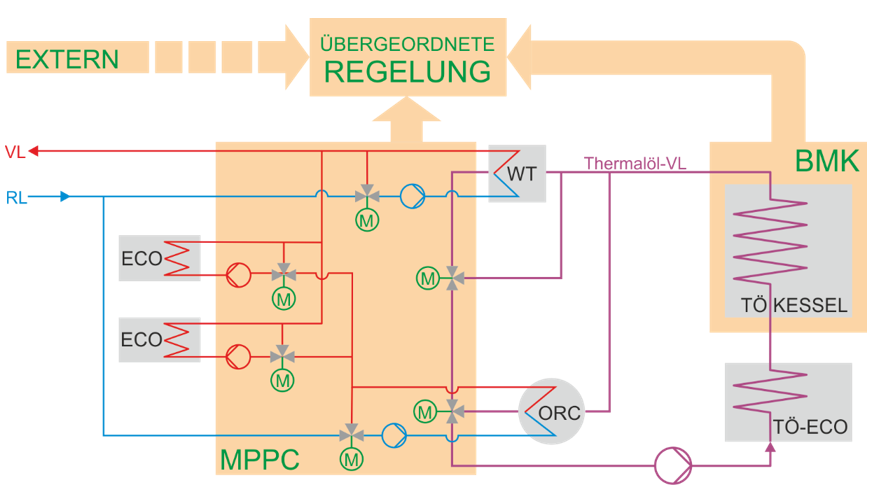Concept of district and local heating networks
District and local heating networks play a fundamental role in industrial waste heat utilisation and thus represent an essential pillar for sustainable CO2 reduction.
The complex requirements due to climate, seasonal changes and changing framework conditions mean a permanent need for control development and optimisation. Digitalisation and volatile regenerative power surpluses will result in completely new technical and economic optimisation potentials and system scenarios for machine learning-based control concepts in the future.
Our main objective in the investigation of district and local heating networks is to determine the potential for energy optimisation. Further objectives are the identification and quantification of technical improvement possibilities, especially with regard to the network and boiler controls, as well as the comparative evaluation of alternative scenarios or concepts for summer and transitional operation under changing, predicted framework conditions (climatic, economic, customer-side).
Example of heat pumps in district heating networks
The steady expansion of many district heating networks leads to an increasing demand for heat, which pushes the existing energy plants to their limits. This usually increases the gas or oil consumption needed to cover peak loads and the associated emissions.
The use of a heat pump for active flue gas condensation is a technically proven and efficient variant to ensure the expansion of the heat supply for additional customers without increasing the fuel demand or the boiler size. In heat grids with CHP plants, this also represents an energetically sensible variant of own power utilisation, because with this concept, otherwise unused waste heat can be made usable at low temperature.
We prepare studies to demonstrate the technical feasibility as well as the economic and ecological benefits of active flue gas condensation.
Example of an overarching control concept for a heating network
Related topics
- Status analysis
- Analysis and concept for waste heat utilisation
- Life Cycle Assessment
- CO2 reduction / avoidance concept
Products
Blog article on the topic



